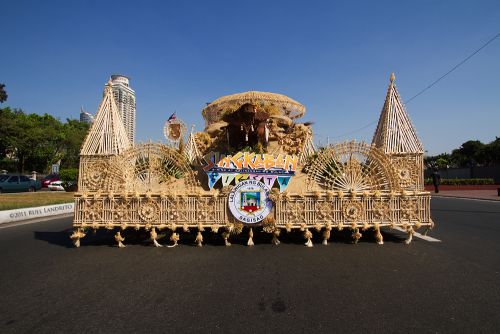Hereditary Garments Used in Singkaban
Article by Jeann_D
Singkaban
The Philippine province of Bulacan, Malolos, is a historical city. It is well renowned for its crucial vicinity in Philippine history. It is often called the "Cradle of the Philippine Republic" because of its connection to the primary Philippine Republic. Malolos, Bulacan, is wealthy in historical websites, establishments, and activities that showcase Philippine tradition and history. The traditional Filipino redecorating approach known as Singkaban entails expanding decorative and vibrant materials.
At some point in the Singkaban festival, people expect various gadgets, including arches, floats, and shows, beautifully adorned with nearby components like bamboo, rice stalks, coconut leaves, and other organic substances. Those decorations are to showcase Filipino creativity, artistry, and cultural enjoyment. Communities combine to produce colorful and exquisite displays through the Singkaban pageant, which regularly features traditional tunes, dances, and other cultural performances. The phrase "Singkaban" itself derives from the basis "suklob" because of this "to hook" or "to attach," representing the motion of fastening those substances to supply shiny and attractive decorations.
The Singkaban Festival is an Art and Cultural event honoring Our Lady of Victory in Malolos, Bulacan. The origins of the Singkaban Festival, also called the "Sining at Kalinangan ng Bulacan" (Art and Culture of Bulacan), can be traced back to the time before colonization, when the local Tagalog people lived there. Singkaban are beautifully crafted entrance arches utilized in Bulacan during fiestas and other significant occasions. Bamboo mainly makes up Singkaban, and the best places to see examples of this craft are the ancient towns of Hagonoy and Malolos. The Singkaban Festival was formally inaugurated in 1993 to commemorate the province of Bulacan's founding anniversary. Its goals were to deepen understanding of the province's art, history, and customs while promoting and protecting its rich cultural legacy. The biggest and longest event held in Bulacan is the Singkaban event.
Baro't Saya
The "baro" is the blouse, plus the "saya" is the skirt, and collectively they make up the traditional Filipino attire known as "Baro't Saya." Objects like this could be visible in the traditional apparel of Filipino women. The Baro't Saya may be retraced to pre-colonial eras before the Spanish colonists arrived in the Philippines. It needs clarification regarding the precise designer or creator of the baro't-saya, which developed at some point as an element of Filipino records and way of life. It represents the country's prolonged records and skillful legacy. To begin with, the final results of the Philippines' widespread cultural past, baro't saya, a traditional Filipino clothing, has yet to be identified as the originator.
For this reason, the baro't saya is manufactured from the Philippines' wealth culture, incorporating impacts from indigenous customs and Spanish colonial history. The baro't saya fashion first advanced in the course of pre-colonial instances, while several indigenous populations at some point in the Philippines maintained their specific dress designs. Early trade with nearby countries, further to the presence of Spanish immigrants in the sixteenth century, affected the evolution of Filipino garb. The Spanish colonial effect used fabrics like pia (pineapple fiber), silk), and the distinctive terno sleeves.
The Baro't Saya is a vital factor of the Singkaban Festival, mainly because it serves as a brand of Filipino background and tradition. The baro't saya is a traditional Filipino garb representing the nation's cultural identification. It serves as a consistent reminder of the Philippines' fascinating culture and ancient beyond.

